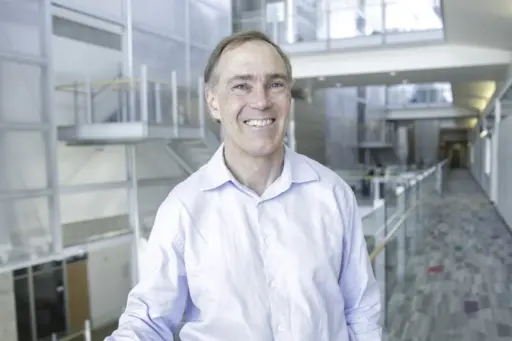If your car could drive itself for a chunk of your daily commute, what work could you take care of before arriving at the office?
John Lee, the Emerson Electric Quality and Productivity Professor in industrial and systems engineering at the University of Wisconsin-Madison, is identifying opportunities to use automated vehicles as mobile offices.
 John Lee
John Lee
Lee, who studies human factors engineering in the context of automation and interface design, is part of a multi-university National Science Foundation project that aims to design systems that support productive work, safe driving and smooth transitions between the two tasks.
The four-year project, led by Andrew Kun, an associate professor of electrical and computer engineering at the University of New Hampshire, is most apt for a scenario in which an automated vehicle takes over driving control on a commuter road with limited cross-traffic, pedestrians, bicycles or other complicating factors.
Lee is working with economic productivity expert Raffaella Sadun, an associate professor of business administration at Harvard Business School, to characterize and assign economic value to work tasks that could be completed in breaks between driving.
“If you’ve got these, say, 10-minute windows of time, what part of your day could you slot into that productively?” says Lee. “I think within the next five years, there probably will be viable options for converting some of the freeway time into work time, particularly in the very low-speed congestion situation, where you’re stuck in traffic and you’re crawling around at 5 miles per hour for half an hour.”
Lee has researched distracted driving amid the rise of what he terms “infotainment” devices. He and former graduate student Ja Young Lee (PhD ’18), now a quantitative user experience researcher at Google, recently published a paper in the International Journal of Human-Computer Studies detailing a computational model that simulates task-switching behavior among drivers. The work could inform how in-vehicle systems deliver and take in information such as text messages or directions.
“If you design your task so it’s continuous and long, it will tend to pull their glances away from the road for a longer time,” he says. “So when you’re structuring an interaction, it’s important to build in break points that allow people to get to the end of a subtask and then look back to the road.”
Lee and members of his research group, led by PhD student Joshua Domeyer, also presented a paper on vehicle-pedestrian interactions at the 2019 Transportation Research Board annual meeting in January in Washington, D.C.
The team, which included undergraduate student Grace Douglas, analyzed how human-driven vehicles approach intersections and crosswalks, looking at how a vehicle’s speed and stopping distance provides cues to pedestrians to cross the street. By characterizing these unspoken communications, Lee hopes to highlight an aspect of vehicle behavior that could be easily overlooked when designing an automated car.
“It’s a social interaction where, if that’s not supported, people could get annoyed or could get hurt,” he says.